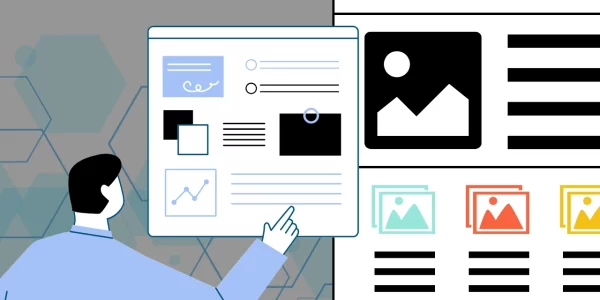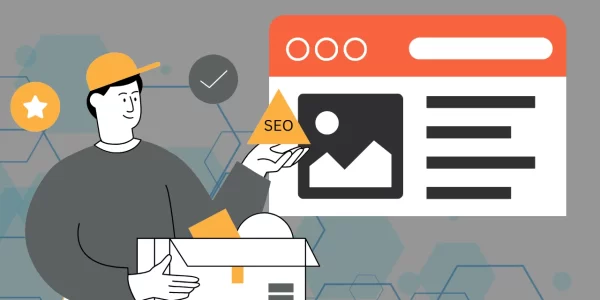Why On-Page SEO Is Important for Your Website’s Success

Despite having a fantastic website, nobody ever views it. It’s like setting up shop in a desert—no customers, no traffic, no sales. On-page SEO can change that.
For search engines like Google to rank your website correctly, they need to understand it. Even with excellent content, your website could not receive the attention it merits if on-page SEO isn’t implemented.
You may raise your website’s search engine ranking by optimizing its technical, structural, and content elements. More traffic, clicks, and conversions are all correlated with a higher ranking.
This topic describes the importance of on-page SEO and how to use it to improve the functionality of your website. Use these easy-to-follow yet powerful SEO tactics to improve your results.
Understanding On-Page SEO
On-page SEO means optimizing individual pages so search engines can understand and rank them. It includes content quality, keyword usage, meta tags, and user experience. Unlike off-page SEO, which depends on backlinks and external signals, on-page SEO is fully under your control.
Why On-Page SEO is Important

1. Helps Search Engines Understand Your Content
Google scans web pages to determine their relevance to search queries. Keywords, meta descriptions, and structured data help Google understand your content, improving its visibility.
2. Improves Organic Rankings
Optimized pages appear higher in search rankings. A better ranking means free organic traffic without relying on paid ads.
3. Enhances User Experience (UX)
A well-optimized website benefits both users and search engines. Fast loading times, mobile-friendly design, and easy navigation encourage visitors to stay longer and engage with your content.
4. Increases Click-Through Rate (CTR)
Clear title tags and meta descriptions make your website more attractive in search results. A compelling meta description encourages users to click your link instead of a competitor’s.
5. Supports Content Marketing Strategy
On-page SEO helps your blogs, articles, and landing pages reach the right audience. Relevant keywords and internal links keep visitors engaged and encourage them to explore your site.
6. Boosts Conversion Rates
SEO does more than attract visitors—it also converts them into customers. Clear calls to action (CTAs), engaging headlines, and optimized images guide users toward making a purchase or signing up.
Key On-Page SEO Elements to Optimize

To maximize results, focus on these essential on-page SEO elements:
- Title Tags and Meta Descriptions: Write compelling, keyword-rich headlines and descriptions.
- Header Tags (H1, H2, H3, etc.): Organize content to improve readability and SEO.
- Keyword Optimization: Use keywords naturally in content and headings.
- Internal and External Linking: Help users and search engines navigate your site.
- Image Optimization: Use compressed images and alt text for better performance.
- Mobile-Friendliness and Page Speed: Ensure your website loads quickly and works well on all devices.
Common On-Page SEO Mistakes to Avoid
Avoid these mistakes to improve your SEO performance:
- Keyword Stuffing: Overusing keywords makes content unreadable and lowers rankings.
- Duplicate Content: Copying content across pages confuses search engines.
- Ignoring Internal Links: Poor navigation reduces page authority and engagement.
- Neglecting Mobile Optimization: A non-responsive site leads to lower rankings.
- Slow Loading Speeds: A slow website frustrates users and increases bounce rates.
Common On-Page SEO Tools

You may improve the effectiveness of your On-Page SEO elements with a variety of tools and strategies. You can use these tools to examine, track, and enhance several facets of your on-page SEO approach. Here are a few examples:
- Google Search Console: Monitors website performance and detects indexing issues.
- Google Analytics: Tracks visitor behavior and identifies areas for improvement.
- Yoast SEO (for WordPress users): Helps optimize content with real-time SEO analysis.
- SEMrush: Conducts site audits, keyword research, and competitor analysis.
- Ahrefs: Analyzes backlinks, keyword rankings, and website performance.
- Screaming Frog SEO Spider: Identifies technical SEO issues on a website.
- Surfer SEO: Provides content optimization suggestions based on top-ranking pages.
Techniques for Optimizing On-Page SEO Elements.

You may enhance your on-page SEO elements by following these best practices and principles. Here are a few examples:
- Make sure your main keyword appears in your title tag, preferably at the beginning.
- Include your primary keyword and a call to action in a distinctive and attention-grabbing meta description.
- Make sure your major term appears in the only H1 element on each page.
- Make subheadings with the H2 and H3 tags and add pertinent keywords to them. Throughout your article, use your primary keyword and associated keywords, but refrain from crowding them in.
- Make advantage of synonyms and other variations of your keywords to increase relevancy and decrease repetition.
- Use concise, educational URLs that incorporate your main keyword and match the title of your website.
- Use internal links to connect your pages, and use external links to provide more references and information.
- Use your alt text to describe your photos and include relevant keywords.
On-Page SEO's Effect on Search Engine Rankings

Your search engine rankings are directly and significantly impacted by on-page SEO. Because it benefits you:
- Boost your relevance: You can match users’ search intent and give them the information they seek by utilizing the appropriate keywords and content.
- Enhance user experience: You can make your website easy to use and browse for both people and search engines by employing the proper structure and design.
- Boost your authority: You may position yourself as a reliable and trustworthy information source in your field by employing the appropriate links and content.
Examples of successful on-page SEO in the real world

Here are some real-world examples of websites that have optimized their On-Page SEO features and produced impressive results to demonstrate how powerful On-Page SEO can be:
HubSpot
One of the top platforms for inbound marketing, sales, and customer support is HubSpot. Through the use of concise and attention-grabbing title tags, meta descriptions, headings, keywords, URLs, links, photos, and more, they have improved their on-page SEO components. Additionally, they provide excellent material that offers their readers value and thoroughly covers a range of subjects associated with their specialty. They consequently rank for thousands of keywords and receive millions of monthly organic visitors.
Moz
One of the top suppliers of SEO tools and software is Moz. Using headings, URLs, links, photos, meta descriptions, title tags, and other descriptive and keyword-rich components, they have optimized their on-page SEO features. Additionally, they create excellent material that informs their readers about many facets of SEO and offers practical advice and insights. They consequently rank for thousands of keywords and receive millions of monthly organic visitors.
Conclusion
On-page SEO is a key strategy for ranking higher, attracting visitors, and improving conversions. Optimizing content, enhancing user experience, and fixing technical issues ensure your website stays ahead of competitors.
SEO is an ongoing process that requires regular updates. If you consistently apply on-page SEO best practices, your website will rank higher, attract more visitors, and provide lasting value to your audience.
Don't Hesitate To Boost Your Business
Contact me for a Free Consultation. Together, we can develop an SEO strategy that distinguishes you from the competition. Let’s build your success story. I am your go-to Filipino SEO Specialist for unparalleled online growth.
